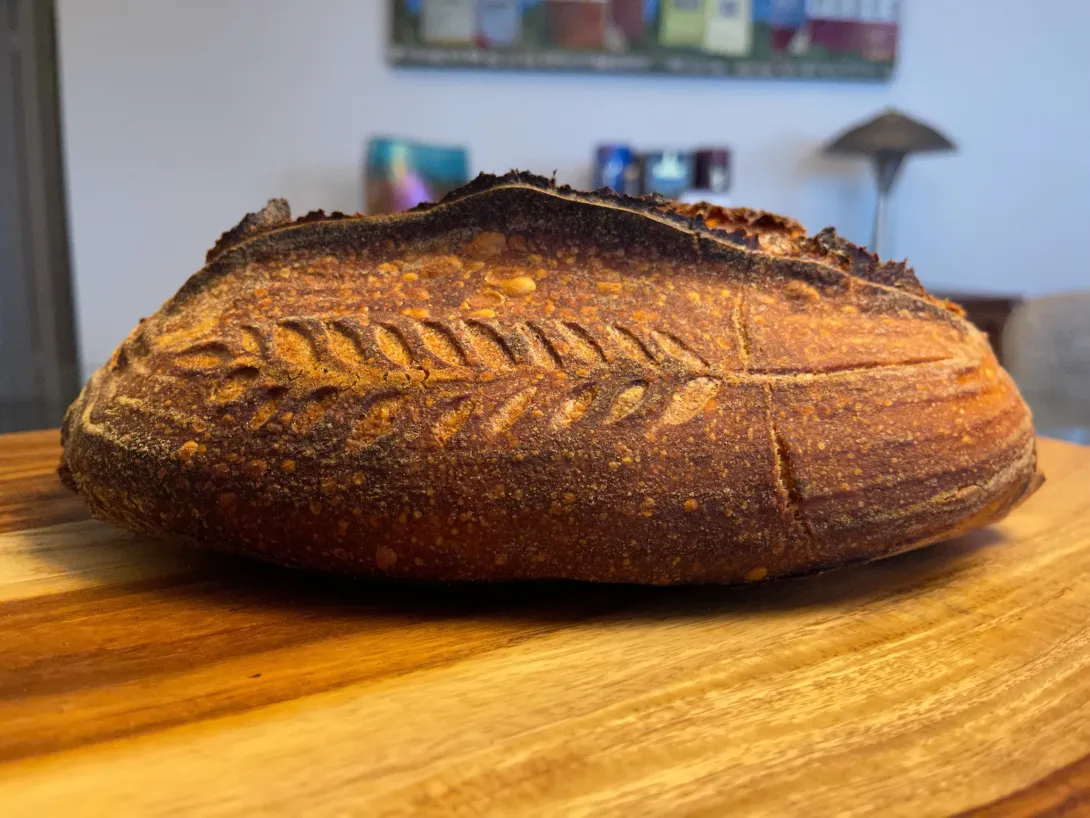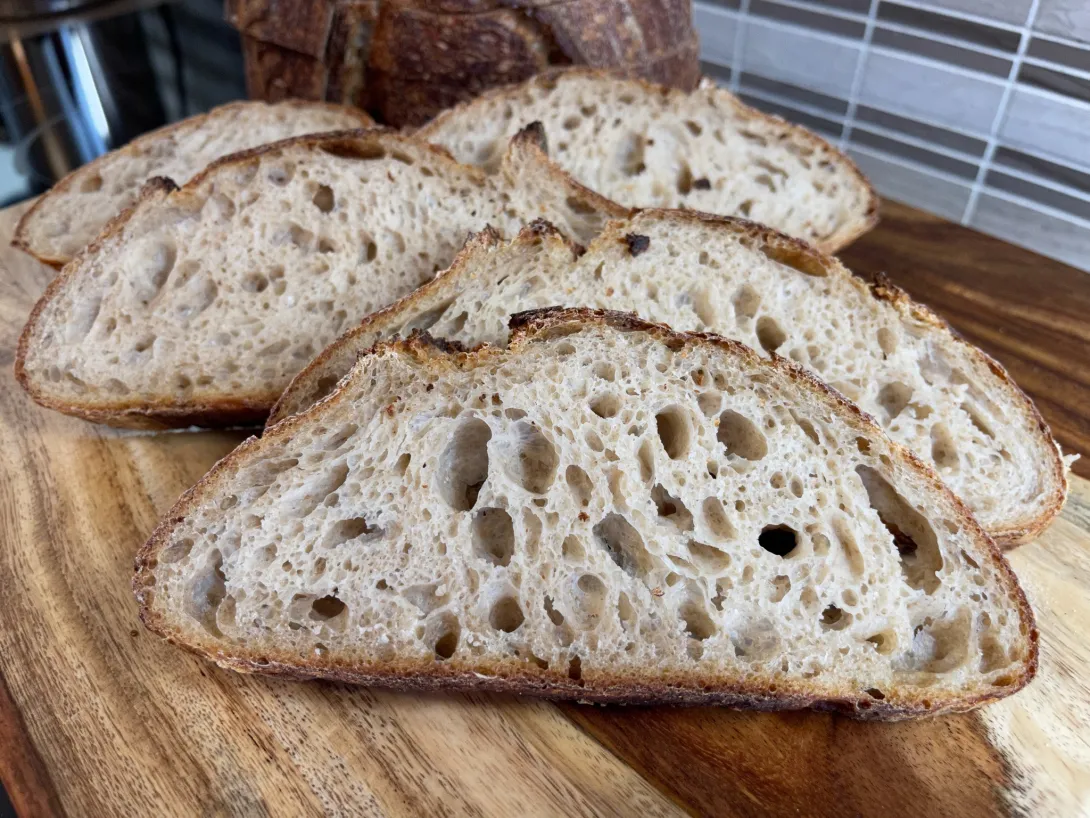You may know that I have recently started using a new pH meter, the Hanna bread and dough meter. I have wanted for some time to use pH to help guide decisions during dough development including when to start cold retard. My interest really peaked when I was trying to bake a decent 100% whole red fife sourdough loaf and ran into issues including gluten breakdown. So I am now first trying to discover what the ideal pH is to shape ending bulk fermentation and when to start cold retard.
Some background information that might be useful, aspartic proteinases native to grains are active in the pH range of 3 to 4.5. These are the proteinases that will break down our gluten. Mildly degraded gluten may be beneficial and help with extensibility, however severely degraded gluten will no longer trap the CO2 produced and cause our loaves to have poor oven spring.
My assumption is that the ideal pH to end bulk and start cold retard may vary from dough to dough depending on their flour composition. For example, I have learned that red fife is not very fermentation tolerant. My assumption, not based on any facts that I could find, is that red fife may contain higher levels of aspartic proteinases and thus the gluten breakdown will be faster as the pH drops below 4.5. On the other hand, a very strong flour such as semola rimacinata may tolerate a lower pH especially if you fully develop the gluten. So I’ve been working with my country sourdough recipe and doing a bit of baking trying to find the limit of the pH. I think I have found that starting cold retard at a pH of 3.89 is too low. This recipe is 80% bread flour, 15% red fife and 5% rye.
My most recent bake of this I ended bulk shaping at a pH of 4.08 and an aliquot rise of 60%. The shaped dough was left on the counter until the aliquot jar showed a rise of between 90-95% and had a pH of 3.89 and then placed in the fridge at a temperature of 3ºC. Because of the dough mass is 900 g it will take a few more hours in order to reach that temperature and greatly reduce the LAB production of acids.
The baked loaf shows some spreading and less than ideal oven spring, suggesting that it is a bit overfermented. The crumb also shows some evidence of overfermentation and gluten degradation with the small elongated alveoli and generally compressed alveoli rather than more rounded alveoli.


As I said the evidence of overfermentation is mild not severe, but I do see it in this loaf so I believe I am very near the lower limit of pH for this particular dough with its grains and hydration. My plan will be to shape earlier perhaps with an aliquot jar rise of 50% and expect that the pH will be around 4.2 at that point and then cold retard close to pH of 4.0. This should allow for some reduce in pH as the dough mass slowly cools in the fridge. From what I have read from other bakers who have collected pH data, for this 700 g doughs they get a further drop of 0.2 pH during cold retard. I haven’t tested the pH of my shaped dough because I don’t want to damage it by stabbing it with the pH meter. I usually have a 2nd aliquot jar that I use to measure the pH of the dough similar to the aliquot jar I use to measure rise. However, I do not know how to approximate the slowly dropping temperature of the shaped dough because the aliquot jar quickly stops fermenting in the fridge since it is only about 30 g of dough.
- Benito's Blog
- Log in or register to post comments